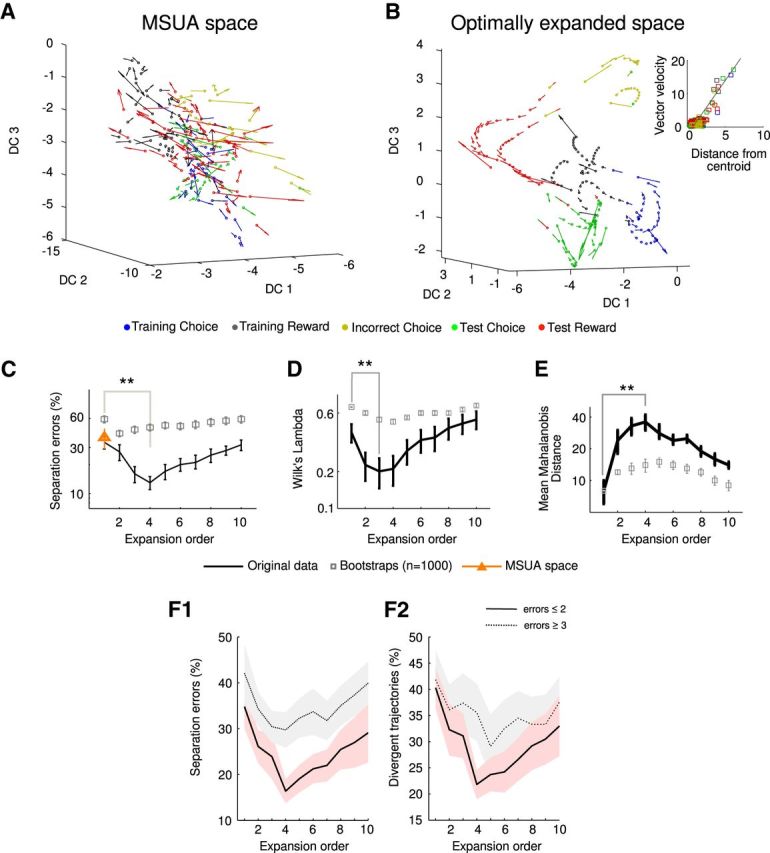Figure 3.

Task-epoch states and trajectories are optimally resolved in expanded state space. A, Neural flow field from the MSUA state space projected onto the three maximal discriminant coordinates (DC) obtained by kernel-FDA (data from 1 SAL-injected animal; dimensions were orthonormalized). In this projection, the flow field is very disordered, occluding the flow of neural trajectories. B, Same as in A for the optimally expanded space, in which task epochs are optimally resolved and the flow field much more ordered. Note the fast movement of the flow (large velocity vectors) when population activity transits from one task epoch to another, whereas movement slows down (small velocity vectors) toward the center of the task-epoch states. The inset shows the velocity of the population vector as a function of its distance to the corresponding task-epoch centroid, in which the velocity increases the farther away from the centroid. C, SEs (mean ± SEM) as a function of multinomial expansion order O initially decrease up to O = 4 and then increase again as O > 4 (**statistical comparison of orders 1 and 4, Wilcoxon's signed-rank test, W = 692, p = 0.0004, normality rejected according to Lilliefor's test, p < 0.03). Block-permutation bootstraps (gray square markers) differ significantly from the original data. Note that the optimal expansion order is approximately O = 3–5. The same effect of expansion order is observed for Wilk's lambda (D) and mean Mahalonobis distance (E). F, Both SEs and the percentage of divergent trajectories increase in animals that make at least three behavioral errors.
